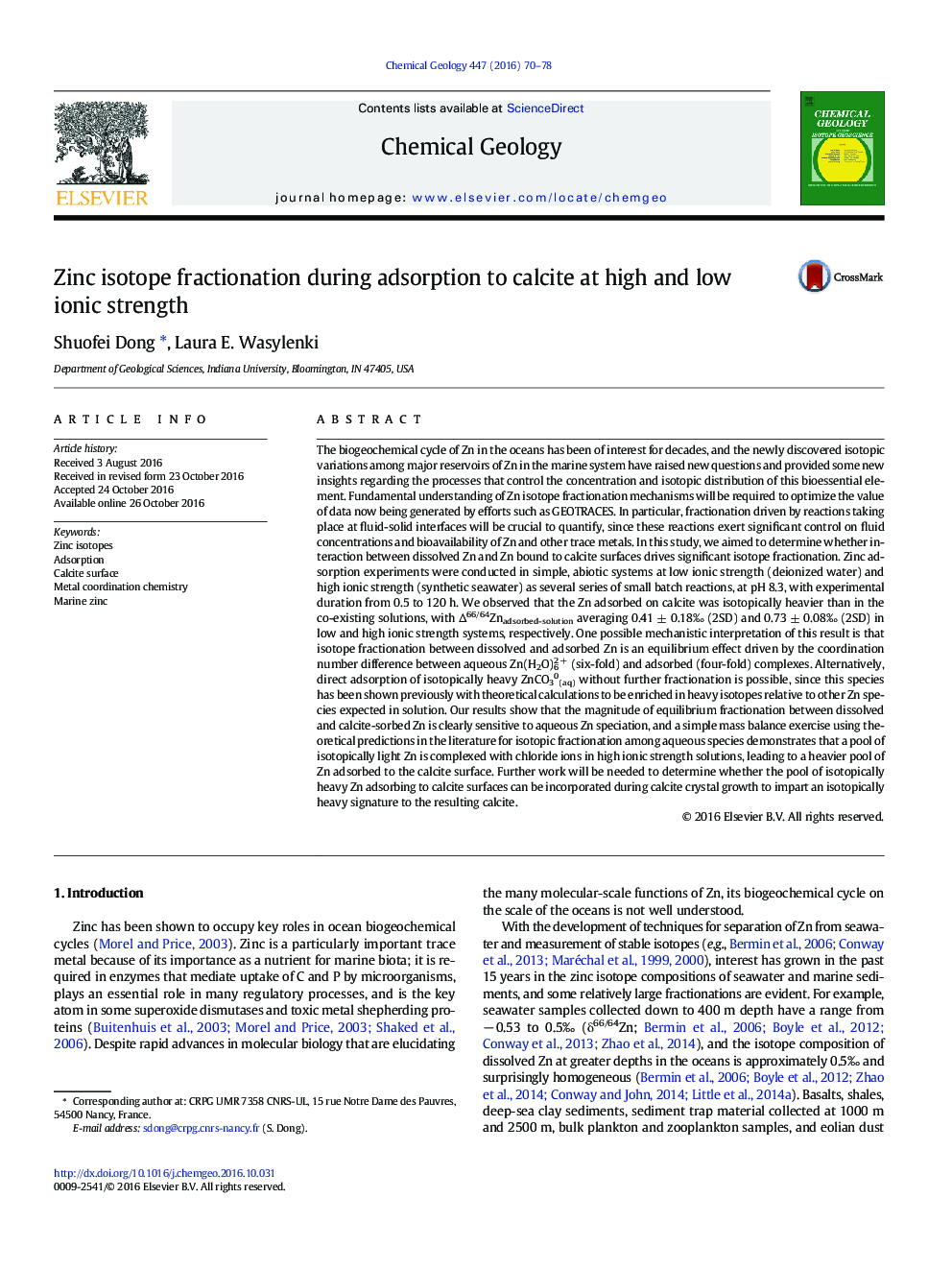| کد مقاله | کد نشریه | سال انتشار | مقاله انگلیسی | نسخه تمام متن |
|---|---|---|---|---|
| 5782982 | 1637527 | 2016 | 9 صفحه PDF | دانلود رایگان |
- Experiments show heavier Zn isotopes adsorb onto calcite surfaces from solution.
- At low (~ 0 m) and high (0.7 m) ionic strength Î66Zn = 0.4 and 0.7â°, respectively.
- Clâ complexation of light dissolved Zn causes larger fractionation at high I.
- Fractionation may be driven by coordination changes during adsorption of Zn2Â +.
- Alternatively, ZnCO30, a heavy aqueous species, could directly adsorb on calcite.
The biogeochemical cycle of Zn in the oceans has been of interest for decades, and the newly discovered isotopic variations among major reservoirs of Zn in the marine system have raised new questions and provided some new insights regarding the processes that control the concentration and isotopic distribution of this bioessential element. Fundamental understanding of Zn isotope fractionation mechanisms will be required to optimize the value of data now being generated by efforts such as GEOTRACES. In particular, fractionation driven by reactions taking place at fluid-solid interfaces will be crucial to quantify, since these reactions exert significant control on fluid concentrations and bioavailability of Zn and other trace metals. In this study, we aimed to determine whether interaction between dissolved Zn and Zn bound to calcite surfaces drives significant isotope fractionation. Zinc adsorption experiments were conducted in simple, abiotic systems at low ionic strength (deionized water) and high ionic strength (synthetic seawater) as several series of small batch reactions, at pH 8.3, with experimental duration from 0.5 to 120 h. We observed that the Zn adsorbed on calcite was isotopically heavier than in the co-existing solutions, with Î66/64Znadsorbed-solution averaging 0.41 ± 0.18â° (2SD) and 0.73 ± 0.08â° (2SD) in low and high ionic strength systems, respectively. One possible mechanistic interpretation of this result is that isotope fractionation between dissolved and adsorbed Zn is an equilibrium effect driven by the coordination number difference between aqueous Zn(H2O)62 + (six-fold) and adsorbed (four-fold) complexes. Alternatively, direct adsorption of isotopically heavy ZnCO30(aq) without further fractionation is possible, since this species has been shown previously with theoretical calculations to be enriched in heavy isotopes relative to other Zn species expected in solution. Our results show that the magnitude of equilibrium fractionation between dissolved and calcite-sorbed Zn is clearly sensitive to aqueous Zn speciation, and a simple mass balance exercise using theoretical predictions in the literature for isotopic fractionation among aqueous species demonstrates that a pool of isotopically light Zn is complexed with chloride ions in high ionic strength solutions, leading to a heavier pool of Zn adsorbed to the calcite surface. Further work will be needed to determine whether the pool of isotopically heavy Zn adsorbing to calcite surfaces can be incorporated during calcite crystal growth to impart an isotopically heavy signature to the resulting calcite.
Journal: Chemical Geology - Volume 447, 30 December 2016, Pages 70-78
